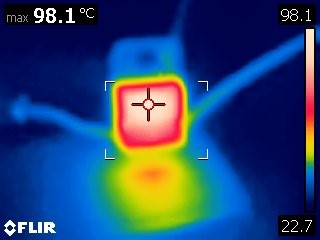One of the byproducts of electronics is heat. Understanding how hot you can expect your components to get can not only save you from burning yourself, but it can also keep them working longer.
When parts get hot, you can use a heatsink, but will a small heatsink work, or will you need a large heatsink? How do you know if passively cooling will be enough, or whether you’ll need to add a fan to your cart before you place that order? Our latest tutorial on thermal resistance can help answer some of these questions.
Understanding Thermal Resistance
May 14, 2020
The tutorial not only explains what thermal resistance is, but also how effective different materials are at transferring heat, from PCBs to metal fins.
The tutorial provides a few real world examples using voltage regulators to compare the numbers that were calculated. For example, with a maximum input voltage of 35V and 1.5A of output current, this 5V regulator wouldn't need a heatsink if it was connected to a 12V source and only drawing 200mA of current, right? For a linear regulator, wasted power is the difference between the input and output voltage, multiplied by the current draw, or 1.4W.
Using the datasheet, we can see that the thermal resistance in this case would be 50°C/W. That would mean the junction temperature of the regulator would be around 70°C above room temperature (23-25°C), which would put the absolute temperature up to 95°C! How does that compare on the bench?
Only off by a couple of degrees! So if you too are tired of using your fingers to see if you should be using a heatsink, this thermal resistance tutorial might have exactly what you need!

No comments:
Post a Comment